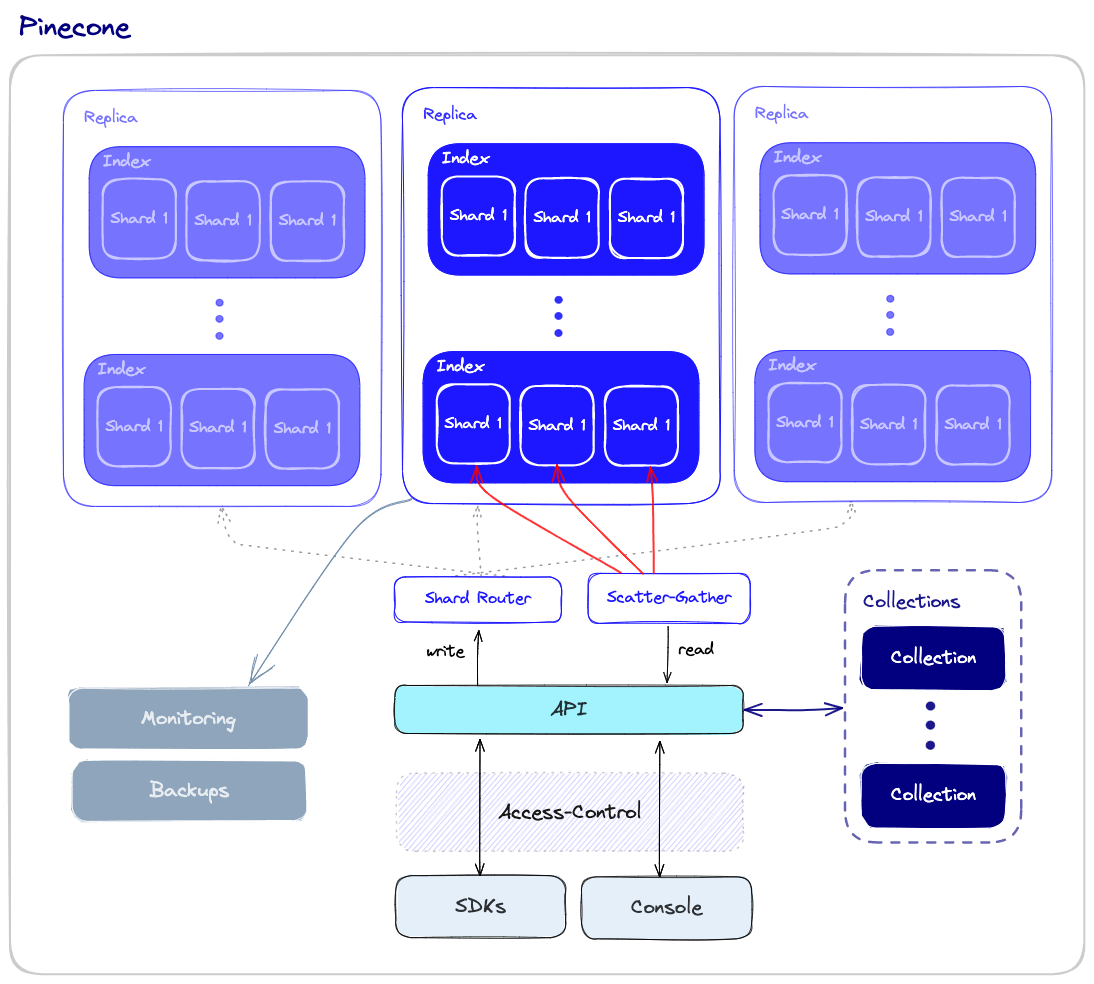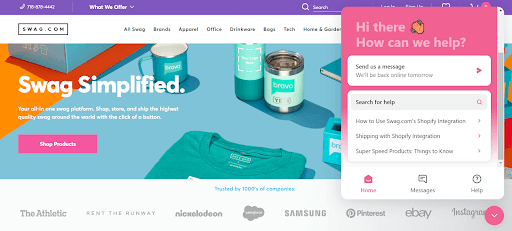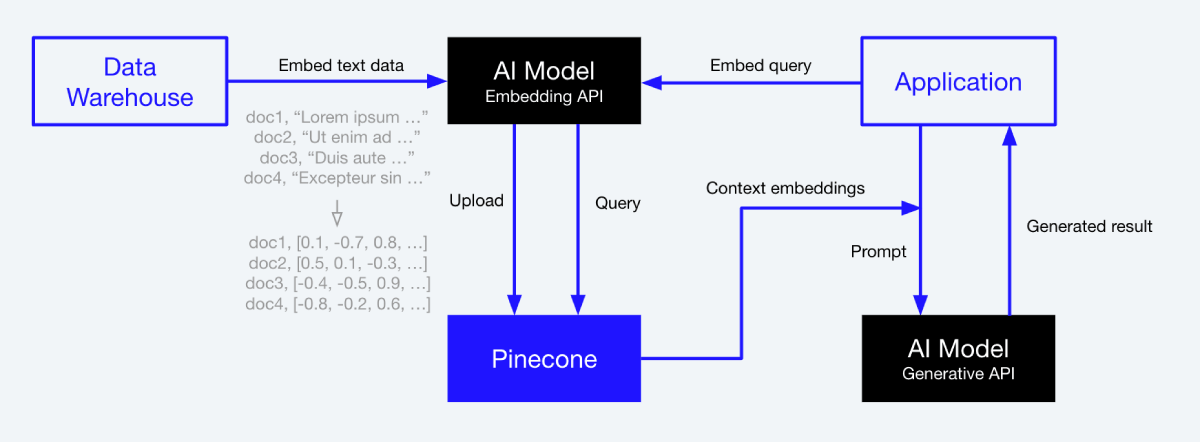
Even though AI models are trained on billions of data points, they can be a bit like Dory from Finding Nemo.
You can feed contextual cues to the AI models to generate more relevant information, but there’s a limit to the context a model can support.
Enter vector databases.
What is a Vector Database?
Vector databases like Pinecone AI lift the limits on context and serve as the long-term memory for AI models. They specialize in handling vector embeddings through optimized storage and querying capabilities.
Alright, let’s do this one last time.
Vector embedding is a technique that allows you to take any data type and represent it as vectors.
But it’s not just turning the data into vectors. You need to be able to perform actions on this data without losing its original meaning.
To save the meaning of data, you need to understand how to produce vectors where relationships between the vectors make sense.
You need embedding models to do this. These are neural networks with the last layer removed. So, instead of getting a specific labeled value for an input, you get a vector embedding.
The challenge of working with vector embeddings is that traditional scalar-based databases cannot keep up with the scale and complexity of this data. This makes it difficult to extract insights and carry out real-time analysis.
This is where vector databases got your back.
Vector databases can dramatically improve the performance of machine learning applications when compared to traditional databases.
A benchmark study that compared the performance of various nearest-neighbor search algorithms found that vector databases like Pinecone have a significant edge over the traditional methods (ball trees and k-d trees).
How significant?
A magnitude of 100x!
Let’s compare relational, document, and vector databases to see where they stand. We’ll also see if vector databases are going to *take over* the landscape that’s occupied by relational and document databases here.
- Relational databases: Relational databases like PostgreSQL, MySQL, and MariaDB use rows and columns to store data. They support vectors through extensions like pgvector. Comparatively less trivially scalable than a vector database, but they’re easier to deploy and manage owing to their popularity with cloud service providers.
- Document databases: NoSQL databases like MongoDB and CouchDB store data in JSON-like structures, also known as documents, that are fairly easy to work with. Usually, you won’t find document databases offering support for vectors, the exception being Redis which is known for in-memory use cases.
- Vector databases: Reallllly niche. Vector databases aren’t your garden-variety databases that can be used to build the backend for your applications. They just provide the functionality to quickly locate multiple documents that have similar text. So, most applications will use a combination of SQL and vector databases for document search that’ll feed data into AI models. So, from the looks of it, vector databases aren’t encroaching upon the territory of relational/document databases. For now.
What is Pinecone AI?
The Pinecone vector database makes it easy to build vector search applications. It has been specifically designed to store, index, and retrieve high-dimensional vectors. This makes Pinecone the ideal choice for machine learning applications like text and image classification, recommendation systems, and anomaly detection, to name a few.
Key Features of Pinecone AI
- Low-latency Search: Pinecone AI’s advanced indexing algorithms ensure that similarity search operations and the nearest neighbor queries are performed with low latency, providing fast and accurate results.
- High Scalability: It can easily handle billions of high-dimensional vectors and scale horizontally, making it suitable for sophisticated machine learning workloads as well.
- Fully Managed: Since Pinecone is a fully-managed platform, you don’t have to worry about maintenance or infrastructure management, letting you focus on deploying and developing your machine learning applications.
- Real-time Data Ingestion: Pinecone supports real-time data ingestion, letting you store and index new data as it becomes available without any downtime.
- Easy Integration: Its API is designed to be intuitive and simple, making it easy to integrate with your existing data pipelines and machine learning workflows.
Getting Started with Pinecone AI
Here’s what the pipeline looks like for a vector database:
- Indexing: The vector database will index vectors using algorithms like Product Quantization, Hierarchical Navigable Small World, and Locality-Sensitive Hashing. This step will map the vector to a data structure that’ll enable faster searching.
- Querying: The vector database will compare the indexed query vector to the indexed vectors in the dataset to find the nearest neighbors. This’ll be done by applying a similarity metric like Euclidean distance, Dot product similarity, and cosine similarity used by that index.
- Post Processing: In some cases, the vector database would retrieve the final nearest neighbors from the dataset and post-process them to return the final results. This might include re-ranking the nearest neighbors using a different similarity measure.
Use Cases of Pinecone AI
AI Search
The Pinecone vector database makes it easier for data engineering teams to build high-performance vector search applications.
AI search uses the meaning of the search query and puts it into context. It’ll return relevant results even if they don’t exactly match the query.
For instance, here’s me looking up ‘How I Met Your Mother’ on Netflix. Given that Netflix doesn’t have ‘How I Met Your Mother’ (at least where I’m located), it offers other options for shows I might find relevant.
Sitcoms with laugh tracks are a common thread across the recommendations here: Big Bang Theory, Friends, Seinfeld, Two and a Half Men.
Here are a few things you can accomplish with AI search:
- Semantic Search: Semantic search allows you to quickly search for keywords across resumes, transcripts, and documents at scale.
- Code Search: Engineers can even search through code without having a clear idea about the syntax.
- Audio or Visual Search: Audio/Visual search allows you to easily sift through millions of call transcriptions to identify the leading causes of customer complaints or calls.
- Multi-Modal Search: With multi-modal search, you can search by keyword across millions of images within a catalog.
Let’s dive deeper into how Spotify uses semantic search to provide a better user experience.
Semantic Search
Spotify’s natural language search for podcasts was a game-changer for the podcasting space.
Previously, users had to rely on keyword matching to find their desired podcast episodes.
Now, they can search for the same episodes in natural language! This is made possible by semantic search.
Semantic search enables a more intuitive search experience because we kinda have an idea about what we’re looking for, but it’s rare for us to know the exact terms for what we’re looking for.
It depends on two pillars, vector search and Natural Language Processing (NLP).
Chatbots
Chatbots, or conversational agents find their use in the customer service space, donning the roles of customer satisfaction reps and support operatives. With the emergence of Large Language Models (LLMs), chatbots can now consider the context and relevance of a response and provide a better response when compared to the B-LLM era (Before LLMs).
Apart from technical support, here are a few more use cases where AI-powered chatbots come in handy for companies:
- Shopping Assistant: With chatbots, you can improve your customer experience by helping shoppers better navigate the site and explore product offerings.
- Self-serve Knowledge Database: You can boost the productivity of your team and save time by allowing your teams to quickly answer questions and collect information from an internal knowledge database.
Here’s how Pinecone makes your chatbots more efficient with contextual embeddings:
Fraud Detection
You can even use Pinecone to identify fraudulent transactions by comparing the features of incoming transactions to a database of known fraudulent transactions.
Using Pinecone AI’s similarity search capabilities and indexing the transaction features, the system can quickly identify potentially fraudulent transactions.
Personalized Recommendation Systems
Recommendation systems are crucial these days for online platforms. Personalized recommendations help users discover relevant content, services, or products.
Traditional recommendation systems depended on matrix factorization techniques or collaborative filtering. And it worked fine for a while, but these techniques struggled with large datasets and might struggle to capture the rich structure of high-dimension data.
You can use Pinecone’s vector database platform to build personalized recommendation systems that use deep learning embeddings to show user and item data in high-dimension space.
As discussed before, Pinecone AI’s nearest neighbor searches fared 100x better than traditional techniques.
This allows Pinecone to better identify items that are most similar to a user’s preferences or previous interactions. (Your Netflix recommendations are about to get a whole lot better 🙂.)
Conclusion
The global vector database market size is expected to grow from $ 1 billion in 2021 to $ 2.5 billion by 2026. That’s a CAGR (Compounded Annual Growth Rate) of 20.2% during the forecast period.
That’s just a tiny indicator of the potential that Pinecone’s vector database platform possesses.
With the increased adoption of vector databases, get ready to witness staggering advancements in the field of machine learning and AI.
Every step along the way, you get to unlock new possibilities for value creation and innovation!
With Pinecone AI’s rising popularity, it’ll only be a matter of time before relational databases pass the baton of SSOT (Single Source of Truth) to it.
This means you’ll need a nifty tool to move your data to Pinecone with millisecond latency.
Estuary lets you do just that.
[Check out this example of how we used Flow to populate Pinecone and asked ChatGPT questions with custom data!]
Its code-free streaming data operations platform gives you access to real-time data with history and the integrations you need.
You can try Estuary Flow for free today to make working with real-time data more cost-effective and just as simple as working with batch data! Head to the web app to start (no credit card needed)!
References:
Vector Databases In Action: Real-World Use Cases and Benefits

Author
Popular Articles















